Chasing a ghost...
/Typical green Northern Barrens Tiger Beetle (Cicindela patruela).
Tiger beetles (Carabidae: Cicindelinae) are a fascinating and diverse group of predatory ground beetles that come in a wide-range of colors and patterns. Because of their beauty and relative ease of identification, tiger beetles are a great 'gateway' insect for naturalists that are more familiar with vertebrate organisms (birds, herps, etc.). There is also a great new field guide to the tiger beetles of the U.S. and Canada that is a must have for any tiger beetle enthusiast. Here's a link to the guide on Amazon: http://www.amazon.com/Field-Beetles-United-States-Canada/dp/0199367175/
Unusual red-phase Northern Barrens Tiger Beetle (Cicindela patruela).
My fascination with tiger beetles really took off in 2008 when I was fortunate enough to land a part-time job surveying for state-listed species in Minnesota. Among the species I was tasked with chasing that summer were two tiger beetles, the Northern Barrens Tiger Beetle (Cicindela patruela) and the Ghost Tiger Beetle (Ellipsoptera lepida). Both species were known from Minnesota's Anoka Sandplain subsection, but many occurrence records were > 50 years old and lacked location specificity. During those surveys, colleagues and I found that C. patruela were present at many of the historic locations in the survey area, and even found previously unknown populations. The ghost - E. lepida - were unfortunately nowhere to be found...
Now hopefully most of you reading this are familiar with the term 'life list' - if not, checkout the very entertaining movie, "The Big Year" staring Jack Black, Steve Martin, Owen Wilson, and many others... Just like the birding community, many tiger beetle enthusiasts life list their finds, sometimes traveling great distances for a chance to observe and photograph an elusive species of these apex micro-predators - and I am no exception.
Chasing a ghost...
In early July 2015, I caught wind of a recently discovered population of Ghosts in Portage County, Wisconsin where dozens of individuals were observed. After more than seven years of looking for this species in Minnesota, I was more than willing to drive the roughly four hours to the site to be able to photograph and therefore life list this species once and for all. However, I was unable to get to the site for a couple weeks, and it was very possible that the species would already be gone for the season (some adult tiger beetles seem to have very short flight periods, lasting only two to three weeks).
Waiting.
Finally the day arrived - July 24, 2015 - and I set out in hopes of finding a Ghost. The goal was to find a big wind-blown pile of sand created by a cranberry farmer (thank you to the farmer that allowed me access). I had hoped to arrive early, around 8 am, but due to delays that morning I didn't arrive until closer to 11:30 am. Once finally at the spot, I took a few habitat photos before starting my search...
Habitat
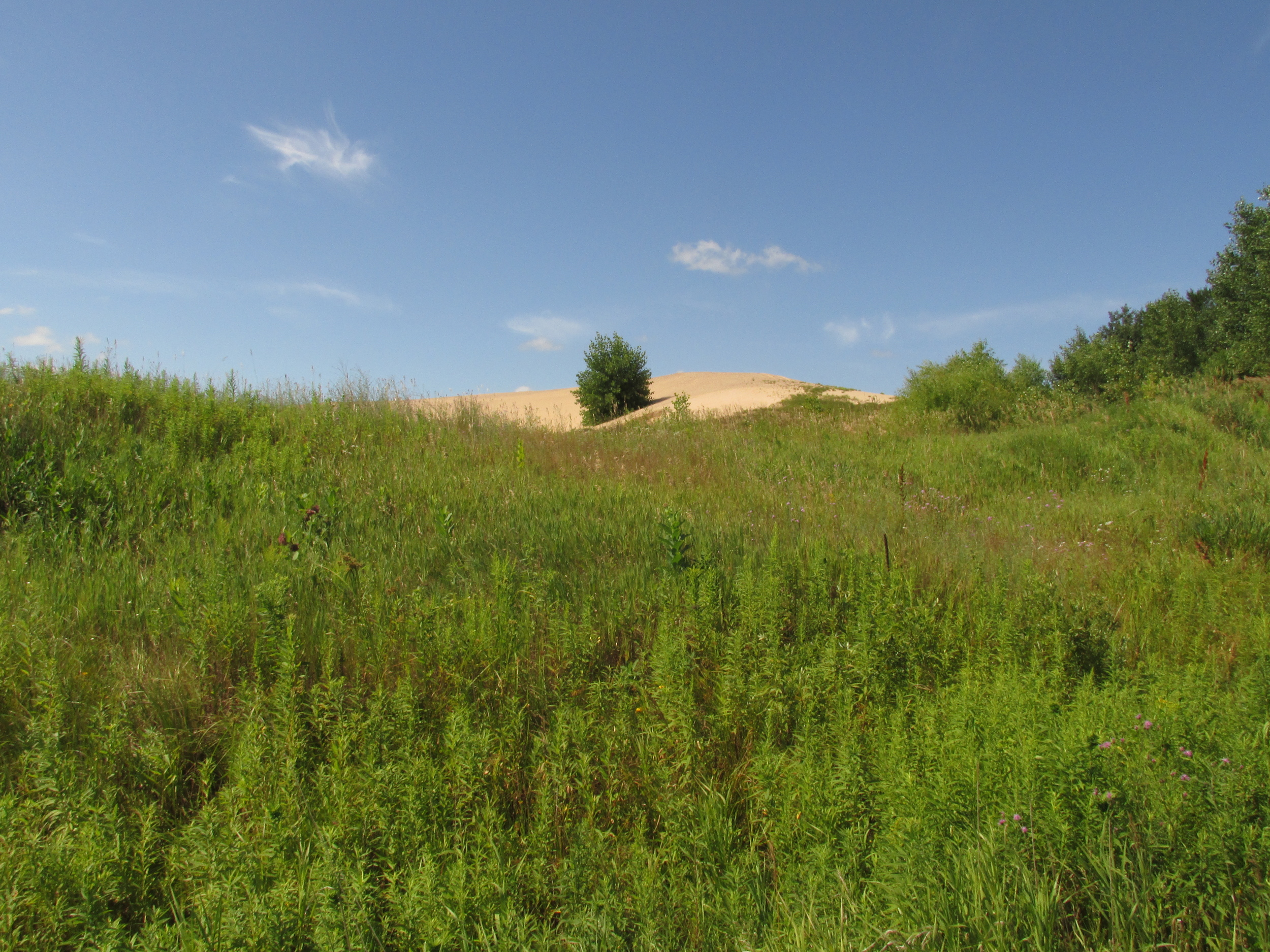

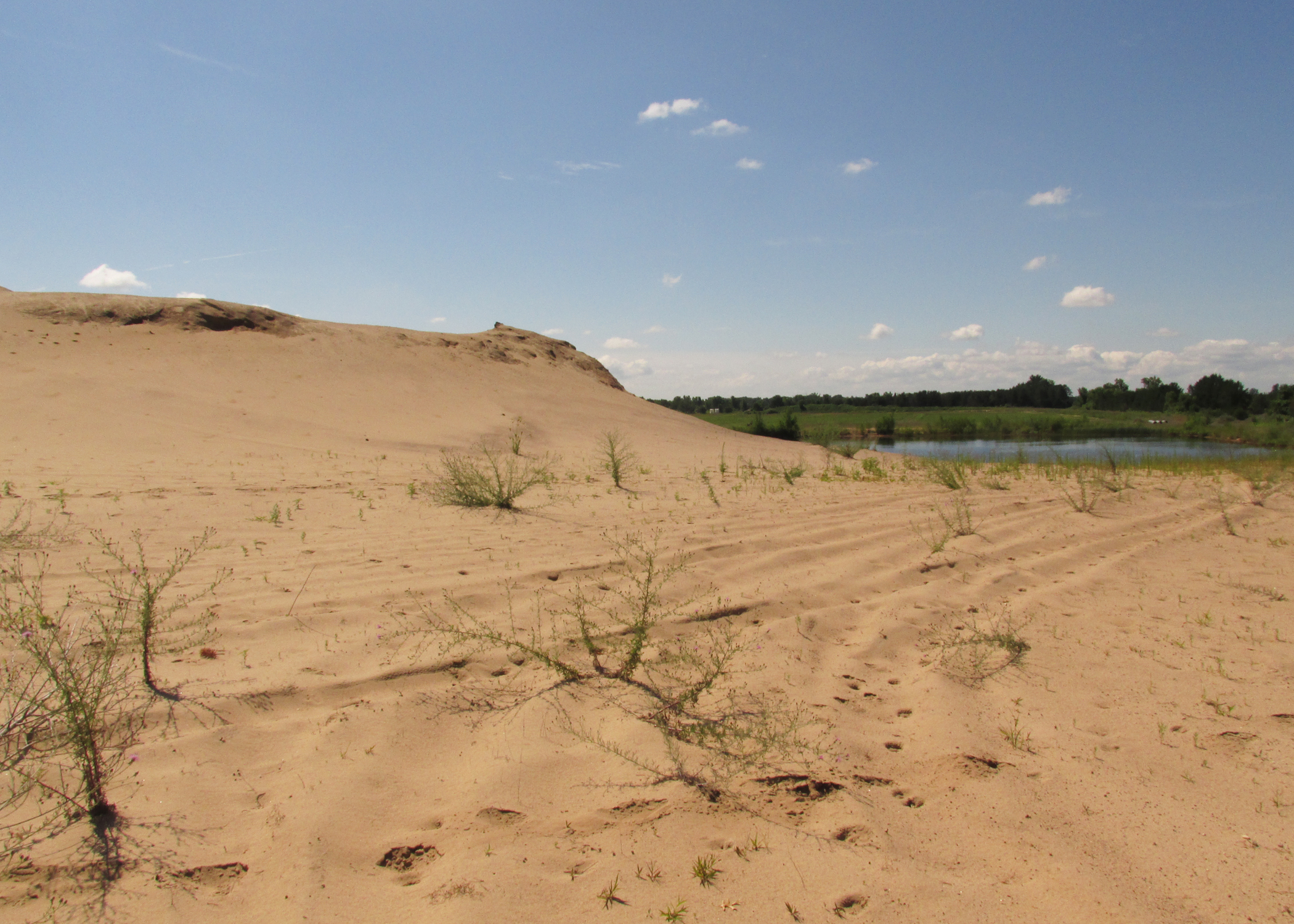
A real-life ghost!
Once out walking on the sand, and after years of searching elsewhere, I finally had my own proof that ghosts are real! As you can see, the Ghost Tiger Beetle is well named as it blends into is sandy habitat extremely well. Though this beetle is tiny, only 9-11 mm, it is a ferocious predator that runs down any arthropod smaller than itself.
Lifer Ghost Tiger Beetle (Ellipsoptera lepida) - Portage County, Wisconsin!
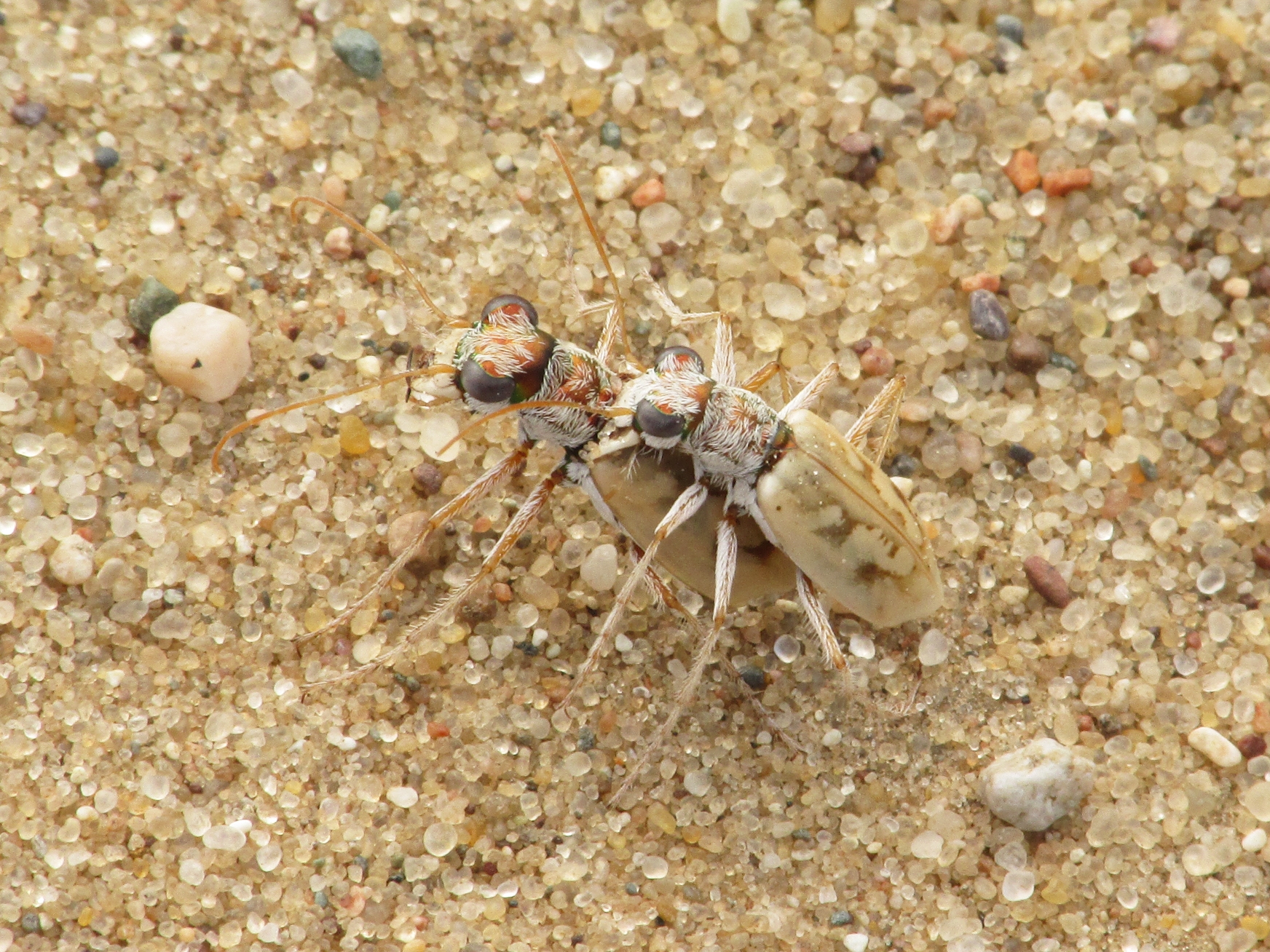
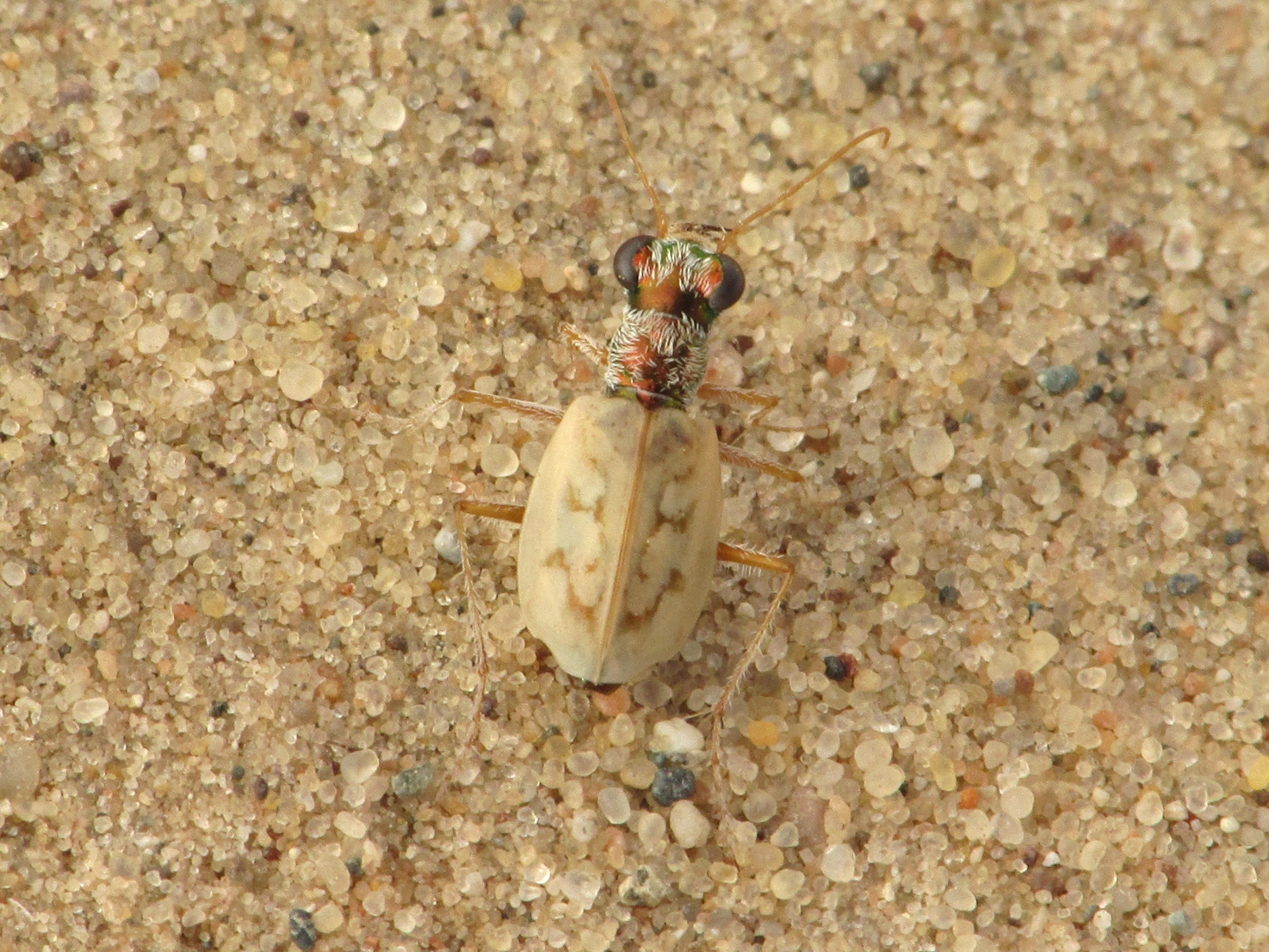
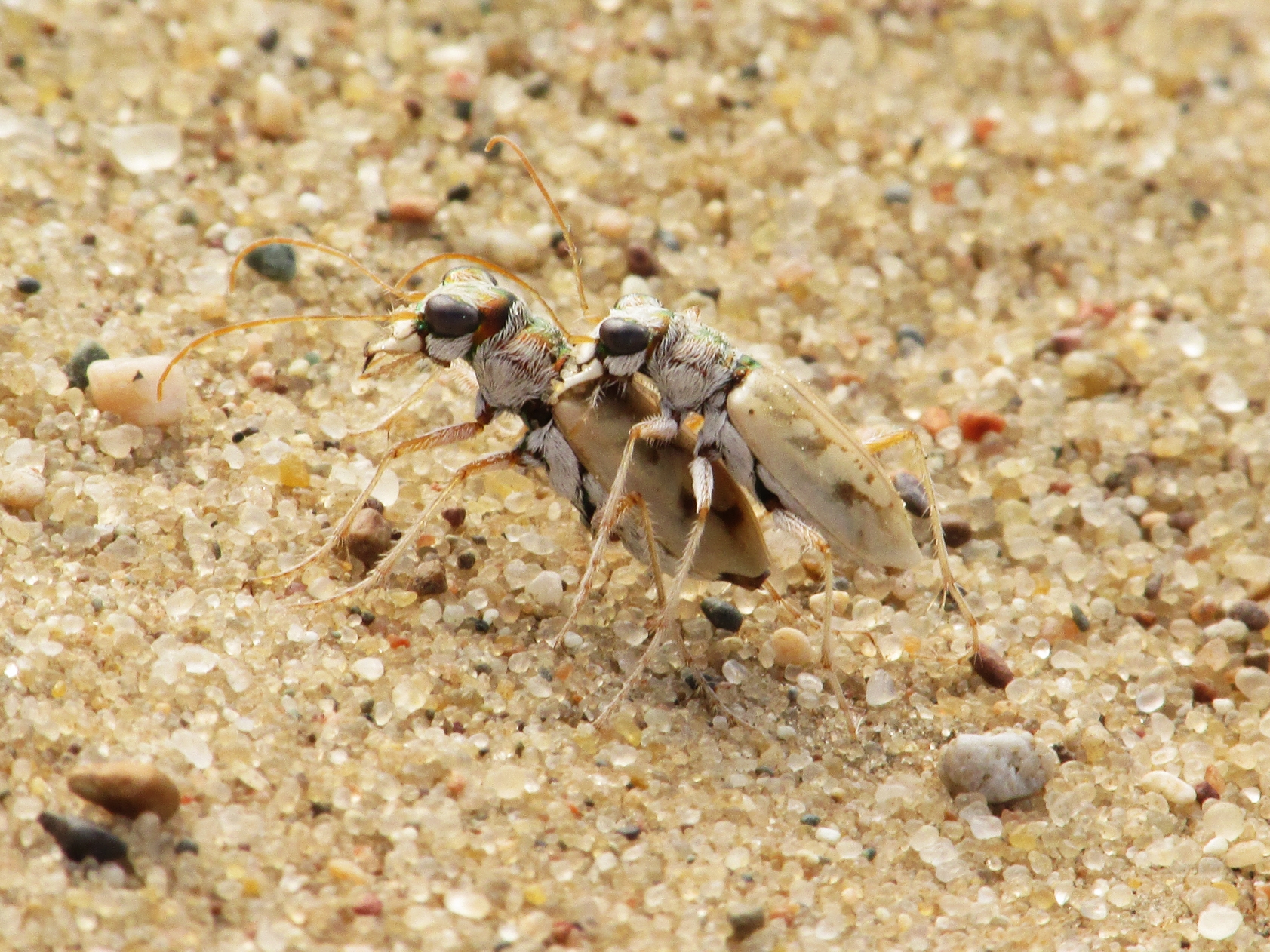

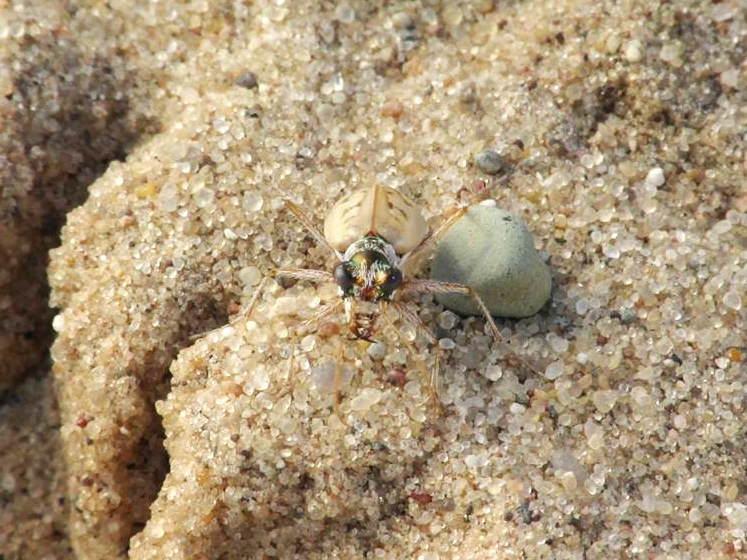
An uncertain future.
Apparently secure in a handful of states, many other states and most of Canada consider the Ghost Tiger Beetle imperiled (NatureServe 2016). The last observation in Minnesota was made in Morrison County in 2012, but despite efforts in the years since no Ghosts have been observed at that location. Its future is uncertain...
Threats to the Ghost Tiger Beetle include habitat loss via housing developments, sand stabilization, sand mining and pine plantations, and habitat degradation by ATVs, natural succession, and invasive species (e.g., spotted knapweed). Light pollution may also impact populations as this species is readily attracted to lights after dark (Ron Huber, pers. comm.). Like many disturbance-dependent species, there seems to be a fine line between disturbing a site enough to maintain suitable habitat, and disturbing a site so much that the species is lost. To learn more about how some insects respond to disturbance, see my previous blog post entitled, "A brief introduction to insect biology and conservation with special attention to prescribed fire effects."
Help support tiger beetles, and other nongame wildlife, by donating to your state's nongame wildlife program. These programs are often underfunded, so every little bit helps. Minnesotans can donate to the Minnesota Nongame Wildlife Program anytime by visiting: mndnr.gov/nongame/donate
Acknowledgments
A special thanks goes out to the butterfly and tiger beetle enthusiast in Wisconsin that helped me along the way, and another thanks to the private landowner that allowed me to photograph these elusive beetles on his property.
The Field Ecology Blog is meant to be informational and thought provoking. Wherever possible, I provide links to supporting external resources. Views expressed here do not represent the views of my employer(s).






